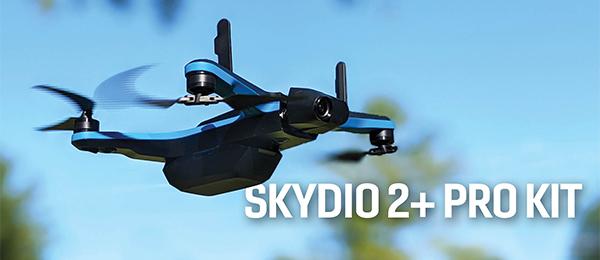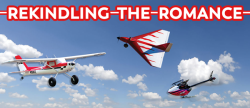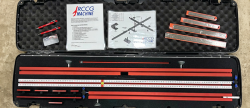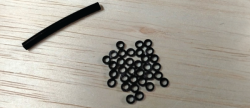Skydio 2+ Pro Kit


"GO AHEAD. TRY TO CRASH IT." These words are typically never uttered to another pilot on the flightline. The reasons are obvious. As modelers, we put a lot of resources toward the aircraft we operate, and to actually encourage someone to "dirt nap" an aircraft we love is antithetical to the hobby. In short, crashing is easy. Flying takes skill.
But those were the exact words I spoke to my visual observer as I handed off the remote to the Skydio 2+.
Before I relay what happened after that challenge, let me first describe the Skydio company. In short, it is one of the first manufacturers of drones that are designed, assembled, and supported in the US. Their autonomy is second to none, and the software that this autonomy is based upon has been developed in the US.
The company was born from a rich tradition in model aviation, led in large part by Adam Bry. Adam is a longtime AMA member and Nats champion who incorporated the lessons learned in RC model flying for use within the Skydio company. In fact, Skydio is currently the largest drone manufacturer in America, and it was a pleasure to review this product.
The ability of Skydio to produce a drone in the US at a price point that challenges the other players in this market is a huge win, but it doesn’t stop there. The features in this aircraft are on par with—or exceed—the competition in most areas. That’s a huge win!
The base aircraft kit is $1,099. It is enough to get you into the air, but you will likely want to add a few additional items. For a fully kitted-out version, you’re looking at $2,169. That sounds steep until you realize that includes a pelican-style hard case, three batteries, a dual charge station, transmitter, beacon, ND filters, spare propellers, cables, and a tablet attachment adapter.


The specific aircraft I reviewed was the Skydio 2+ Pro Kit. As a longtime RC pilot and newer Part 107 pilot, I was excited to get my hands on this aircraft and put it through its paces. As I unboxed it and began to preflight the components, I quickly realized that this wouldn’t be a traditional flight review because the level of autonomy I typically expect on an aircraft is AS3X, which works to smooth out the flight and mitigate an occasional wind gust on an aircraft.
As I charged the batteries, I began to research the product and downloaded the Skydio app (available for both Android and Apple). I was beginning to recognize the level of autonomy that this drone would offer.
The application setup was easy to follow, and within a few minutes, I was ready to take to the sky. The instructions recommend that the initial flight be conducted through the phone app alone so that you can go through the offered tutorial. It progresses you through the drone’s safety knowledge and basic flight operations and does a good job of initially preparing you for your flight.
Additionally, Skydio has created its Skydio Flight School, an entertaining and informative online video series that helps you understand and access all of the semiand fully automated flight options. The host, Nicole Bonk, is the head of flight testing at Skydio and holds a multiengine commercial pilot’s license in addition to her Part 107 certificate. Her knowledge runs deep, and she confidently and humorously teaches.
Perhaps the most surprising aspect of the Skydio 2+ for me was the amount of autonomous flight operations that were available through the app alone. As I mentioned, this was not going to be a traditional review with me banging the sticks on a traditional RC aircraft! It’s important to realize that this shift in perspective isn’t a bad one. It’s an opportunity to think about how you can utilize this drone either as a hobbyist or a professional, taking full advantage of how this autonomously conducts its flights based on what you ask it to do in capturing images or videos to tell a story.
That autonomy is impressively powerful and is aided by six continuously active cameras that are all about obstacle avoidance. These cameras create a real-time 3D map of the drone’s surroundings, allowing the drone to capture great shots with little concern given to the obstacles in its path. Skydio simply navigates above, around, or beneath obstacles based on a complex algorithm and the parameters you provide.
In my experience and through my research, Skydio’s obstacle avoidance is the best available in readily attainable civilian drone technology.
The app enables you to open or restrict flight capabilities, including altitude and speed of both the aircraft and the gimbal. The camera can operate with as high of a resolution as 4K at 60 frames per second. You can insert micro SD cards up to 256 GB, so you’re unlikely to run out of room, even when shooting at this high resolution and frame rate. You also have full access to the camera controls through the app, easily adjusting the camera’s range settings.

The app can also be used to download chosen video and still images directly from the drone to your cellphone, which is an incredibly useful feature if you need to quickly produce a video. Audio is captured by your phone’s microphone, and when saving these videos directly from the drone, the audio files are synced to the videos that are produced. If more robust editing is desired, you can access files through the micro SD card. These are in separate video and audio files.
You can also adjust your return-to-home and low-battery settings via the Skydio app. You should set your home points and parameters based on what you are doing and where you are. You need to understand how this drone will behave if it loses its signal, loses the tracking target, and/or becomes low on battery and must land. The settings are easy to navigate and understand, but additional instructions are easily found on the Skydio Flight School.
The Pro kit that I received also included two additional methods of flight. I’ll start with what Skydio calls its "Beacon," a minimalist controller similar to a small TV remote with a small screen. This remote allows you to operate your Skydio drone by using only the beacon, which is a GPS-enabled device that communicates with your drone, enabling it to track you as you conduct whatever operation you want to capture.
In my experience, the Beacon works best when it’s paired via Wi-Fi to your cellphone, which increases the accuracy of the GPS signal. You can also use hand gestures to control the aircraft with the beacon, but the buttons and small screen are enough to get by without much effort. When flying in this manner, you are best served by allowing the drone to autonomously capture footage based on what flight style you input.
Do you want the drone to orbit? That’s easy. Do you want it farther away? Tap a button on the beacon. Do you want the drone to fly behind, to the side, or in front of you? Push a few buttons and it happens. This is where the Skydio shines in its ability to autonomously navigate complex terrain in a manner of your choosing.
The two flying styles (beacon and hand gestures) help to define the use case for this aircraft: as an autonomous capturer of whatever you’d like to document. But what if you already know how to fly? Is there a place within the Skydio line of products to use your established flight skills? As a matter of fact, there is. The third method of operating the aircraft is by way of a controller. This enables manual flight operations to be conducted, enabling your skillset to come into its own.


To accomplish this, Skydio partnered with Parrot to produce a transmitter that comes fully loaded with Skydio software. You still have access to the automated and cinematic options via your phone app, and manual control is as comfortable as slipping into your recliner at home. An added benefit of any of the flying styles is the continuously operating obstacle avoidance feature, helping to ensure that your next shot doesn’t end up being one of a shotdown drone.
Of the many cinematic features that Skydio includes, one in particular stands out to me. This is the ability to create keyframes and a flight path that creates cinematic and repeatable shots. You can speed up, slow down, and even change batteries then go right back to the same keyframes you previously created. It’s an amazingly robust, simple-to-access feature that can help tell the story you are crafting.
Another benefit of the Skydio 2+ is that you’ll have a good amount of flight time to tell that story! The battery comes in at an advertised 27 minutes. Practically speaking, my drone was asking to land at 24 minutes, which provided me with roughly a 2-minute reserve. Charge times are respectable, with each battery taking approximately an hour. The ability to charge two batteries in succession stacked on the same charger is helpful.
Let’s discuss the range of the aircraft for a moment. I found myself internally arguing on this one a bit. On one hand, the aircraft is entirely suited to conduct operations within line of site (LOS), as required under current law. It is important to note that, depending on the location you are flying and the cellphone or tablet you are using, you might have reduced range because the link is established through Wi-Fi.
When observing users who were on older pre-5G hardware, the range was considerably impacted. On current hardware, the range was significantly improved. As advertised, in the middle of the desert with no other interference, the Skydio 2+ should achieve a distance of 3 km. In a highly saturated Wi-Fi environment, such as a city, that distance drops to 500 meters. Should this matter when conducting LOS operations? I don’t think so, but if you gather your FAA waiver and are conducting a flight beyond visual line of site, you might find yourself limited.
That’s a lot of discussion about something that should be presented visually. To that end, I’ve put together some footage taken during my month of flight with the Skydio 2+. In addition to the footage I captured, I’ll also share some of the videos that were captured during Camp AMA. Enjoy the footage and, wherever possible, I’ve credited the authors on that video.
Oh yeah, remember the quote from the first line of this review? You won’t find any crash footage on that video because there isn’t any to share. The drone has proven its stability and safety in all scenarios that I’ve presented it with.
The next time you see me at the flying site, ask me about the drone! I look forward to sharing it with you as well, and you might just hear that rarely spoken line as I hand off the controls: "Go ahead, try to crash it."
SOURCES:
Parrot
Kyle’s Skydio videos










3 comments
Skydio 2 +
Skydio 2
Could you contact me with
Add new comment